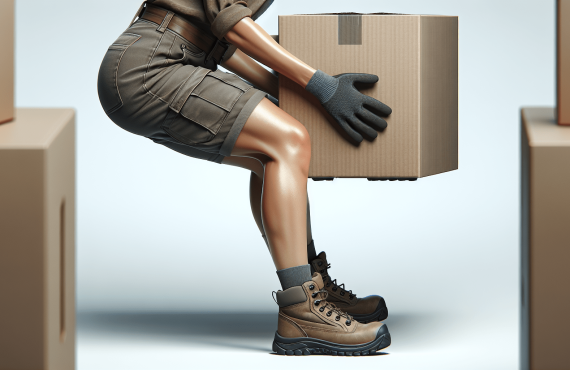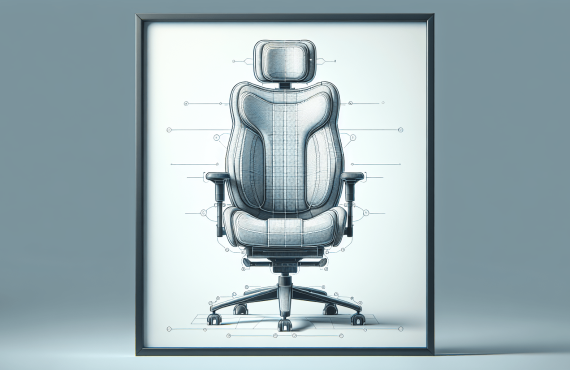Have you ever noticed just how heavy your child’s backpack is when they head out the door for school each day? It’s a common concern for many parents, and for good reason. Backpacks, while convenient, can potentially lead to injuries if not used properly. Let’s delve into how and why this happens, and what you can do to ensure your child’s safety.

Table of Contents
Understanding Backpack-Related Injuries
Backpacks are essential for carrying books, supplies, and even lunch boxes. However, improper use of backpacks can lead to a range of injuries affecting children’s health. It’s often startling to realize that something as simple as a backpack can create such a rift in your child’s physical comfort and long-term health.
The Common Culprits: Strain and Posture
When backpacks are overloaded or worn incorrectly, they can cause strain on the back, shoulders, and neck. The most common issue is poor posture, as children often adjust their stance improperly to accommodate heavy loads. A backpack weighing more than 15% of a child’s total body weight can lead to significant strain, potentially causing discomfort and pain.
The Ripple Effect on Health
This strain can lead to a cascade of other issues. Misaligned posture due to heavy backpacks can affect the spine over time, potentially leading to long-term back issues and chronic pain. Children might not initially voice discomfort, which can prolong any developing issues. It’s essential to address these warning signs early to prevent chronic conditions.
Tips for Choosing the Right Backpack
Selecting the right backpack doesn’t have to be a daunting task. It’s all about finding a balance between functionality and support, and you can ensure this by keeping a few pointers in mind.
Size Matters
The size of the backpack is crucial. A backpack that is too large can cause children to overpack, adding unnecessary weight. Conversely, a backpack that’s too small won’t provide adequate support or space for essentials. As a rule of thumb, the backpack should not be wider than your child’s torso or hang more than four inches below the waist.
Straps and Padding
Look for backpacks with wide, padded shoulder straps and a padded back. The padding will cushion the load on your child’s back, shoulders, and neck, preventing rubbing and discomfort. Additionally, adjustable straps ensure that the backpack sits snugly against the back for optimal support.
Features for Better Comfort
Consider backpacks with multiple compartments for even weight distribution. A waist or chest strap can also help distribute weight and improve comfort. These features contribute to better weight management, making it easier for your child to carry their loads safely and comfortably.
Proper Backpack Usage: A Guide for Parents and Kids
Education is key to preventing injuries. Teaching your child how to properly use their backpack can significantly reduce the risk of strain and discomfort.
Packing Smartly
Encourage your child to pack only what is necessary each day. Heavy items should be placed at the center and close to the back to maintain balance and reduce strain. It’s also important to regularly clean out the backpack to avoid carrying unnecessary items.
Wearing it Correctly
Make sure your child always uses both straps to distribute the load evenly. Slinging the backpack over one shoulder is a significant contributor to back pain as it causes uneven weight distribution. The backpack should sit evenly in the middle of the back and not sag down toward the buttocks.
Monitor Weight
Regularly check the weight of your child’s backpack. It should not exceed 10-15% of their body weight. If you find that it’s consistently heavier, it’s time to reassess what’s necessary for your child to carry each day.
Signs Your Child May be Suffering from Backpack-Related Injuries
Being proactive about identifying potential injuries can save your child from long-term complications. Here are some red flags to watch out for:
Complaints of Discomfort or Pain
If your child frequently complains about back, shoulder, or neck pain without any apparent cause, it could be related to their backpack. This discomfort often results from the repetitive strain of carrying a heavy or unevenly distributed load.
Visible Red Marks
Red or deep indentations on the shoulders are clear indications that the backpack straps are too tight or that the weight is too heavy. This suggests that the straps are digging into their skin, which can lead to further complications over time.
Posture Problems
Notice if your child is developing poor posture, such as leaning forward, or if they struggle to stand straight without adjusting their backpack. These signs often point directly to backpack issues that need addressing immediately.

Seeking Professional Help
If your child continues to experience pain despite adjustments to their backpack usage, it might be time to consult with a professional. Chiropractic care can be an effective means of addressing and managing pain associated with backpack-related injuries.
The Role of Chiropractic Care
Chiropractors specialize in ensuring the health of the spine and helping to alleviate pain associated with misalignment and strain. If your child experiences persistent discomfort, a licensed chiropractor might be able to offer relief and prevent future issues.
Visit Henry Chiropractic
For those located in Pensacola, Florida, Henry Chiropractic, led by Dr. Craig Henry and Dr. Aaron Hixon, offers specialized care aimed at improving health and wellness in children. Through chiropractic care, they strive to alleviate back and neck pain, ensuring your child feels better from the time they wake up until they’ve finished their homework. By addressing any pain or discomfort early on, your child can maintain a healthier posture and lifestyle long-term.
Long-Term Solutions and Lifestyle Adjustments
Beyond immediate adjustments and seeking professional care, encouraging a lifestyle that strengthens the muscles and aligns posture is vital for long-term health.
Encouraging Physical Fitness
Encourage your child to engage in regular physical activities that strengthen core, back, and shoulder muscles. Activities such as swimming, yoga, and even simple exercises like planks can greatly improve posture and resilience against strain.
Educate About Ergonomics
Teach your child about proper posture techniques, including how to sit properly at their desk and how to balance their body when carrying weights. Incorporate these practices into daily life to help foster lifelong habits that combat back-related issues.
Routine Checkups and Maintenance
Regular checkups can ensure any existing issues are managed before they develop further. From annual physicals to periodic visits to a chiropractor, routine maintenance can be an effective tool in preventing backpack-related injuries.
Creating a Supportive Environment
Ensure your child’s learning environment supports proper posture and minimizes strain. Ergonomic chairs, adjustable desks, and comfortable study spaces contribute to maintaining a healthier posture and reducing unnecessary stress on their bodies.
Advocate for Change in Schools
It’s beneficial to advocate for the use of digital textbooks or the installation of lockers so that children do not need to carry every book home daily. Schools could also promote awareness of backpack safety, creating a safer environment for all students.

Encouraging Open Communication
It’s vital to foster an environment where your child feels comfortable discussing any discomfort. Encourage open conversations about their physical wellbeing regularly. By addressing concerns early and listening to their feedback, you can collaboratively find solutions to issues before they develop into significant problems.
Conclusion
By focusing on prevention, education, and proper care, you can significantly reduce the risk of backpack-related injuries in your children. Ensuring they understand how to pack, wear, and adjust their backpacks correctly is a powerful first step. When combined with physical fitness, professional advice, and ergonomic awareness, you’re setting your child on a path to healthier posture and long-term wellness. If you’re in the Pensacola area and need additional support, don’t hesitate to reach out to Henry Chiropractic where professionals like Dr. Craig Henry and Dr. Aaron Hixon are eager to assist in maintaining and improving your child’s musculoskeletal health.












